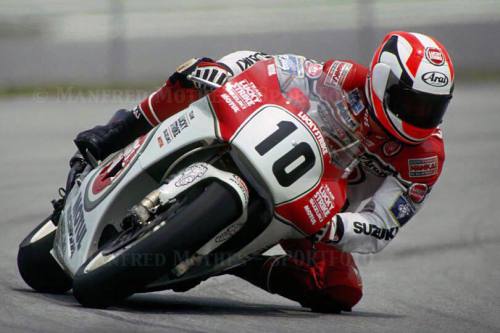Northern Ireland's Norman Brown and Switzerland's Peter Huber are both killed during the sixth lap of the 500cc Class British Grand Prix at Silverstone.
As a light drizzle was falling, Norman Brown was seen coming down Hangar Straight with his left arm held straight up. He was riding slowly, about 40-50 mph, clearly experiencing mechanical problems and trying to get to the pits or waiting for a chance to get to the inside of the circuit. Norman took to the outside of the track going through the ever-fast Stowe Corner. Entering the corner he was in full view of riders coming down the straight at about twice his speed. A few riders safely overtook him before the corner, but as he exited Stowe, still holding the outside and waving his hand, he found himself on the racing line in a point where it was extremely difficult for the oncoming riders to see him.
Three riders came out of Stowe and found Brown about 25 feet from the apex of the corner and 3 feet in from the edge of the track. All three managed to avoid him, two of them by passing on the outside on the small concrete overrun between the grass and the track. Brown continued on for another 100 feet or so when another group of riders approached Stowe. The last rider in the group was Peter Huber who had his view obscured by the bikes in front of him. As Huber exited the corner he turned his head back to check his position, as most riders do. In doing so he did not see the slow bike ahead of him and went full-speed into the back of Brown.
Norman Brown was pronounced dead at the track. Peter Huber was airlifted by helicopter to the Radcliffe Hospital of Oxford, where he was pronounced dead on arrival.
Norman Brown was from Newry, County Down, North Ireland. Peter Huber was from St. Gallen, Switzerland.
Today in motorcycle history proudly supports the National Association for Bikers with a Disability (NABD). www.nabd.org.uk









